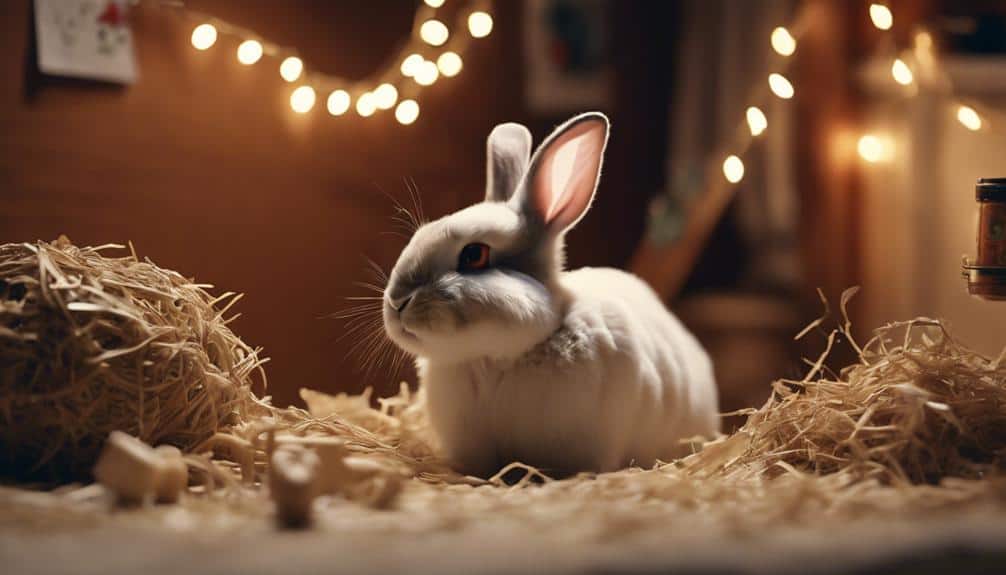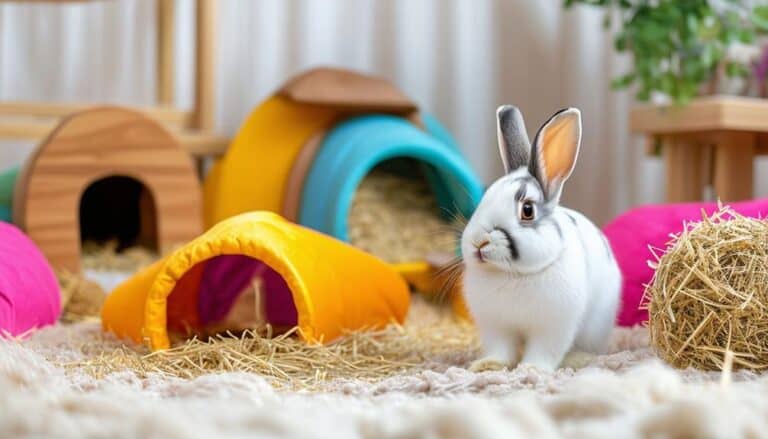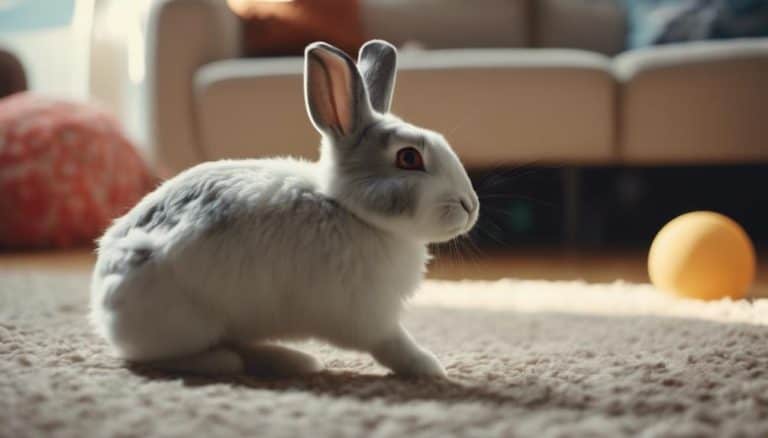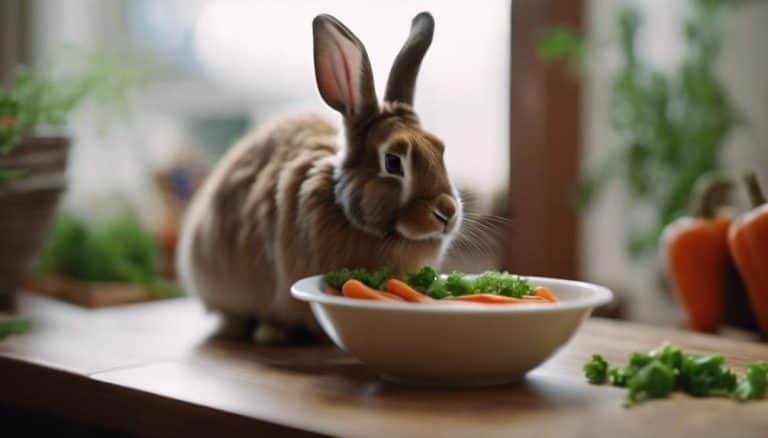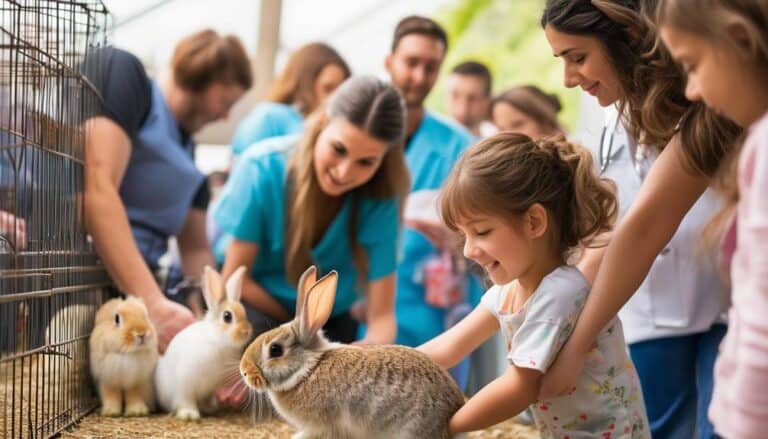Managing Pet Rabbit Nesting Behavior
When you’re managing your pet rabbit’s nesting behavior, understanding the intricacies of their natural instincts is essential. You’ll need to provide a suitable nesting box, typically at least 12x12x12 inches, and fill it with soft materials like hay or straw.
Ensuring this box is placed in a quiet, private area helps reduce stress for the mother rabbit. But what happens when your rabbit starts exhibiting signs of nesting? Monitoring and adjusting the environment can make a significant difference. Let’s explore how you can create a safe and supportive space for your rabbit during this critical time.
Understanding Nesting Behavior
Nesting behavior in rabbits, characterized by the gathering of materials such as hay, straw, and fur, is a clear indicator of maternal instincts and the imminent birth of kits. Female rabbits, driven by these instincts, start nest building a few days before kindling. By focusing on creating a safe environment, they guarantee their newborn rabbits will thrive.
You’ll notice your rabbit collecting nesting materials and meticulously arranging them. This behavior is a crucial part of their natural preparation for birth. Providing your rabbit with ample hay, straw, and other soft materials will support her efforts.
Observing nesting behavior offers valuable insights. It’s your cue to prepare for the arrival of the kits. Ensure the mother rabbit has a quiet, secure space to build her nest. This not only supports her maternal instincts but also plays an essential role in the well-being of the kits.
A calm environment minimizes stress, promoting a successful birthing process.
Creating a Nesting Box
To guarantee your rabbit has a secure and comfortable place to give birth, construct a nesting box with dimensions of at least 12x12x12 inches. This size ensures the mother rabbit has ample space to move and tend to her kits. Line the nesting box with soft materials such as hay, straw, or shredded paper. These materials provide insulation and comfort, helping the mother rabbit build a proper nest.
Place the nesting box in a quiet area to give the mother rabbit the privacy she needs. This reduces stress and encourages natural nesting behavior. Regularly monitor the mother’s behavior to make sure she’s using the nesting box effectively and adjusting the materials as she sees fit. Check the nesting box frequently to keep it clean and dry, removing any soiled or damp materials to maintain a healthy environment.
| Material | Purpose |
|---|---|
| Hay | Insulation and nesting support |
| Straw | Warmth and comfort |
| Shredded paper | Softness and absorbency |
Providing a proper nesting box is essential for the well-being of both the mother and her kits. By maintaining a clean, dry environment and offering privacy, you facilitate a successful and stress-free nesting period.
Signs of Nesting
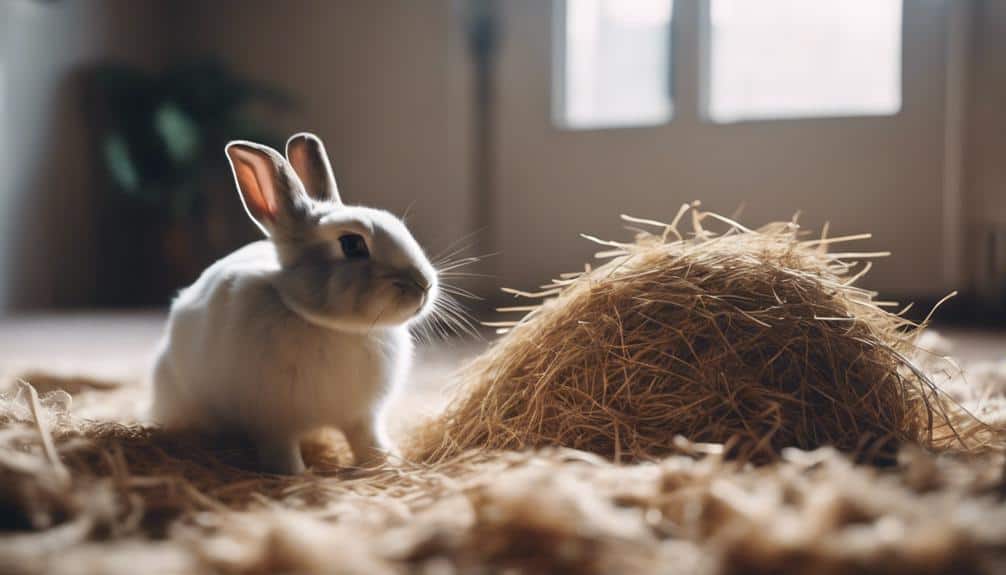
You’ll notice key indicators of nesting behavior in your rabbit as she starts gathering hay or straw to construct a cozy nest. This instinctual activity is driven by the desire to create a secure environment for her offspring.
One of the most prominent signs includes the rabbit pulling fur from her body to line the nest, providing additional insulation and comfort. This fur-pulling behavior is essential for maintaining ideal nest temperature and ensuring the survival of her kits.
As the nesting behavior intensifies, you’ll observe your rabbit engaging in more frequent and vigorous digging or rearranging of bedding materials. These activities serve to shape and refine the nest, making it as comfortable and protective as possible. The nesting process typically becomes more pronounced as the due date approaches, signaling the imminent arrival of her young.
A suitable nesting box can greatly facilitate this natural process, offering your rabbit a dedicated space for her nesting activities.
Ensuring a Safe Environment
Ensuring a safe environment for your pregnant rabbit involves providing a suitable nest box, about 12x12x18 inches, filled with clean hay or straw. This nesting material is vital for the rabbit to build a cozy and comfortable nest.
Position the nest box in a quiet area to minimize disturbances and help the rabbit feel secure. Regularly monitoring the nest box guarantees it remains clean and dry, which is essential for the health of both the mother and her babies.
To maintain a safe environment, consider these steps:
- Choose the Right Nest Box: Make sure it matches the recommended dimensions (12x12x18 inches) to provide adequate space.
- Use Clean Nesting Material: Fill the box with clean hay or straw, which are ideal for nesting.
- Select a Quiet Area: Place the nest box in a secluded spot to minimize noise and disturbances.
- Monitor Regularly: Check the nest box frequently to ensure it stays clean and dry.
Avoid sudden changes in the nest box location or environment, as this can cause stress and disrupt the nesting process. Maintaining consistency is key to supporting your rabbit during this critical time.
Monitoring and Support
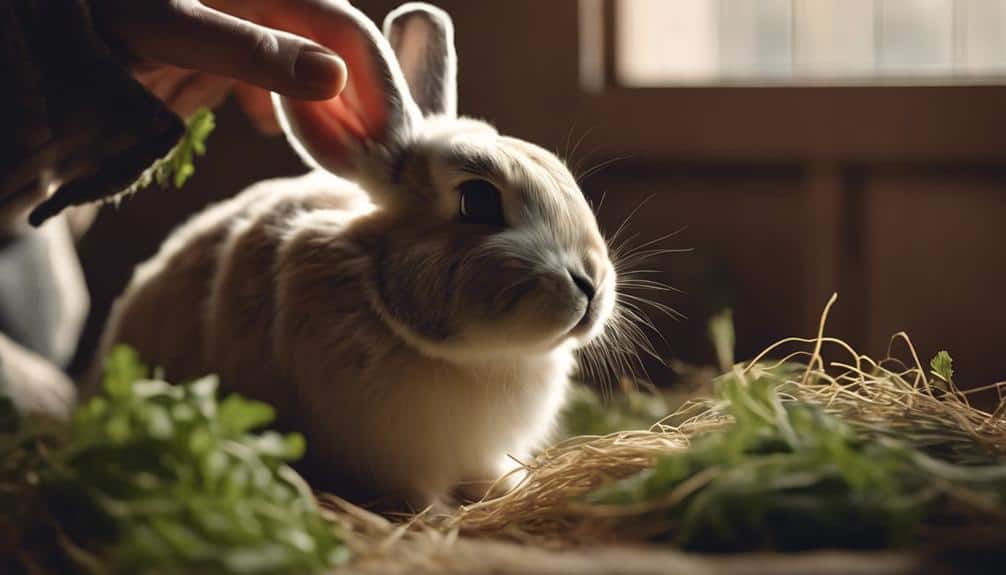
Observing your rabbit’s nesting behavior closely allows you to provide timely support and guarantee the well-being of both the mother and her offspring. As the due date nears, monitor your pregnant rabbit for signs of readiness, such as gathering hay and fur to construct her nest. This behavior indicates her natural instincts are kicking in, and she requires a quiet environment to feel secure.
Provide suitable nesting materials like straw and hay to facilitate her nesting efforts. These materials align with her natural instincts, making her feel more comfortable and less likely to experience stress. Avoid disturbing the nesting area to prevent potential abandonment of the nest. Stress can cause a mother rabbit to abandon her offspring, so maintaining a calm and quiet environment is essential.
Track the nesting progress by making unobtrusive observations. Look for consistent behaviors and confirm that she’s using the nesting materials effectively. Your role is to support without interfering; hence, subtle monitoring is key.
Conclusion
By understanding and managing your pet rabbit’s nesting behavior, you’ll guarantee a thriving environment for both the mother and her kits.
Create a well-constructed nesting box, monitor for signs of nesting, and maintain a safe, clean area.
Regularly adjust the materials to provide the best comfort and insulation.
Your proactive approach, grounded in scientific evidence, will facilitate a stress-free nesting process, promoting the overall well-being of your rabbits.

